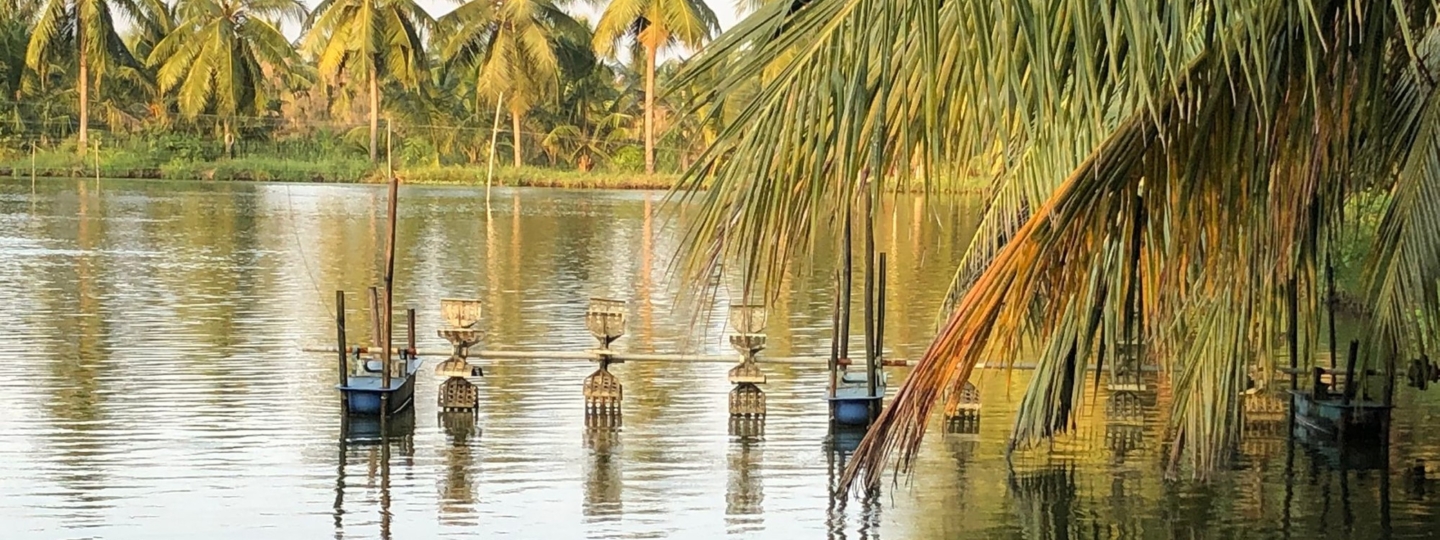Promoting ecosystem aquaculture
Landscape Approach
Improving aquaculture management at scale requires common goals, collective action, and continuous monitoring.
To support sustainable growth, aquaculture must shift to long-term, collaborative management that includes ecosystems, supply chains, climate, livelihoods, and transparent reporting – at a geographic scale beyond the current limits of farm-level improvements.
Landscape-level approaches, which are being increasingly adopted in terrestrial commodities, provide an opportunity for aquaculture to achieve these goals. Through holistic, scaled-up improvements, aquaculture management can:
- Achieve responsible sourcing areas
- Protect and restore habitat
- Create aquaculture supply chains that are more productive, resilient, and environmentally and socially sustainable
- Support farmers, other natural resource users, and communities that depend on shared resources such as land, water, and aquaculture feed ingredients
These efforts can be guided by SFP’s Framework for Sustainably Managed Aquaculture and monitored by the AIP Directory and FishSource Aquaculture profiles.
What does a successful landscape AIP look like?
A successful landscape-level aquaculture improvement project (AIP), or landscape initiative, involves effective multi-stakeholder collaboration and management across a defined geographic area. This means implementing improvements to shared production, environmental, and social sustainability challenges and demonstrating measurable progress in achieving these improvements.
Successful AIPs also deliver benefits for production, people, and nature by improving farm performance, safeguarding natural resources, and enhancing the well-being of local communities and resource users. Ultimately, this means establishing a verifiable responsible sourcing area that is working toward long-term management.
Turning the landscape approach into action
SFP and the Aquaculture Stewardship Council (ASC) have developed a roadmap for adopting a landscape-level approach to aquaculture improvements. The Roadmap for Landscape-Level Improvements in Aquaculture (below) also includes more about its application in shrimp farming in Andhra Pradesh, India.
Frequently Asked Questions about the landscape approach
Drawing from mature landscape initiatives in other sectors, the global standards organization ISEAL and 20 leading landscape practitioner organizations came together to establish definitions and four core criteria for impactful and scalable landscape initiatives. Click the boxes below to learn more:
A socio-ecological system, defined by a geographic area with common and interacting ecological and socioeconomic characteristics. A landscape may be delineated based on river basins, seascapes, ecosystems, jurisdictions, productive boundaries, or in other ways.
A management approach focused on multi-stakeholder collaboration to advance shared sustainability goals and build resilience at the landscape scale.
A multi-stakeholder initiative that operationalizes a landscape approach in a particular landscape, by setting common goals, taking collective action while reconciling different interests, and monitoring progress toward shared sustainability goals and outcomes at a landscape scale.
- Scale: The landscape initiative operates at the scale of a defined ecological, socioeconomic, or administrative area, e.g., a watershed or jurisdictional boundary.
- Multi-stakeholder governance process or platform: The landscape initiative is governed by a multi-stakeholder process or platform that has decision-making responsibility for the design, implementation, and monitoring of the initiative.
- Collective goals and actions: Stakeholders in the landscape initiative have agreed on a set of long-term landscape-scale sustainability impact goals and a collective action plan for achieving those goals.
- Collective Monitoring Framework: The landscape initiative manages a collective monitoring and reporting framework that enables assessment and communication of progress toward the initiative’s collective sustainability impact goals.
These four core criteria serve as a practical guide to help a wide range of stakeholders – including investors, governments, and supply chain actors – assess the maturity and credibility of landscape approaches and the subsequent initiatives.
For more information on these criteria, and a set of sub-criteria for each one, please see “Core Criteria for Mature Landscape Initiatives” (ISEAL et. al., 2024)
Related publications and resources
Help make aquaculture more responsible
Contact SFP to learn how you can get involved in managing aquaculture at the landscape level.

